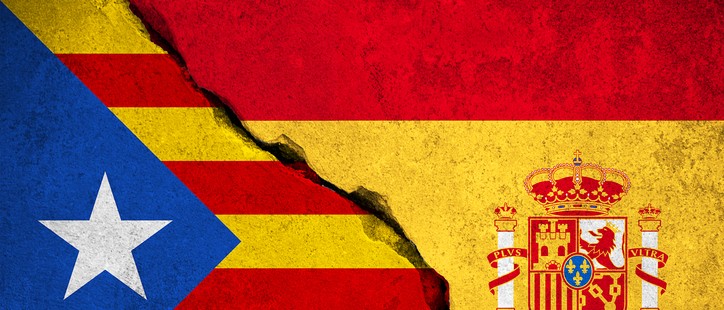Our Opinion: 2017
Catalonia Heading to the polls

The dramatic political events of October seem to have done little to change the sentiment of Catalonian voters. Opinion polls for Thursday’s parliamentary election point to pro-independence parties obtaining a similar amount of votes as in the 2015 regional election, although the prospect of a high turnout may favour the national parties. If the pro-independence parties lose their overall majority, the Podemos franchise could become a kingmaker, but the most likely outcome would be a hung parliament.
If put back in government, the secessionist parties would probably reignite their political challenge, while putting their push toward unilateral independence on hold, given Madrid’s successful implementation of direct rule over the region without provoking social unrest, and the lack of international support for a one-sided declaration of independence.
As a result, markets should focus on the potential effects of protracted uncertainty at the national level. Any negative economic damage will be limited, barely offsetting the impulse from healthy external economic and financial conditions. On the political front, the secessionists’ ongoing struggle will likely distract the parliament from addressing some key structural issues such as the labour market or the public pension system.
If opinion polls are correct, Spanish assets will under- perform in the days following the vote, but without a material impact on the Eurozone as a whole. An unresolved deadlock would reduce the probability of Spanish bonds and equities outperforming other European markets in 2018.
Voter turnout on 21 December is likely to be high following Catalonia’s failed attempt to unilaterally declare independence. In our view, a high turnout would mostly favour the national parties such as the socialist PSOE and the centrist Ciudadanos. Along with the Popular Party, their combined share of the vote could rise to 42–45%, according to the average of opinion polls, from the 39.2% they obtained in 2015. The secessionist parties, on the other hand, already benefit from a high degree of support among their followers, and their share of the vote may retreat to 44–47% from almost 48% in the last regional election. Nonetheless, they could still retain an absolute majority in the parliament as the electoral system favours the less populated (and more independence-inclined) Catalonian provinces. The leftist coalition En Comú-Podem is expected to obtain 6–9% of the votes, potentially becoming the kingmaker if the sum obtained by the seces- sionists ERC, Junts per Catalunya (formerly PdeCAT) and CUP falls short of an overall majority.
Other, unusual circumstances may have a material impact on future political developments in Catalonia. On one hand, the central government is only likely to suspend direct rule once a regional government has been elected, potentially influencing the incentives for forming a coalition. On the other hand, the former president, vice-president and some regional ministers of Catalonia, who lead the slates of Junts per Catalunya and ERC, are either in jail or abroad after being accused of rebellion and sedition by the judiciary; thus, should they win, they would be unable to serve normally as MPs, with unpredictable effects on parliamentary activity.
There are three likely outcomes from the elections:
Firstly, secessionist parties could get an absolute majority. Their initial sense of empowerment could result in bold statements about their intention to pursue independence, although the reinstated regional government would have to abide by the law under the threat of direct rule being reimposed. Political tension and uncertainty would remain high, although the economic damage would remain moderate, as long as social unrest is avoided.
Secondly, secessionists may win the election, but lose an absolute majority. The far-left Podemos becomes the kingmaker, but could deny support to the three secessionist parties if they continue to seek unilateral independence. The other two coalition options in this scenario – a left coalition between ERC, En Comú-Podem and PSOE, or a coalition of national parties supported by En Comú-Podem – seem equally improbable given their antagonistic views on political, social and economic issues. The most likely outcome in this scenario would be a hung parliament, and a continuation of direct rule by the central government, leading to another snap election sometime in 2018.
Alternatively, National political parties may obtain a simple majority. This is unlikely but high voter turnout could enable the national parties to obtain more votes than the secessionist parties and a similar number of seats, albeit short of an overall majority. The Podemos franchise rejects entering a coalition with the Populist Party, Ciudadanos and PSOE, but probably also with the pro-independence parties. As in the former scenario, Catalonian politics would enter a stalemate, with a high probability of a repeat election. Nevertheless, as secessionist parties reassess their strategies and direct rule from Madrid is prolonged smoothly, political uncertainty recedes somewhat, limiting the negative economic impact.
The two first scenarios could come as a surprise to many investors, because the market has become complacent since Madrid successfully implemented direct rule over the region with only minor social unrest. Therefore, a small, initial negative reaction is likely in financial markets, leading to a minor widening in risk premiums on Spanish assets. This should not, however, lead to a significant fall in the value of Spanish assets or have a material impact on Eurozone equities. Nevertheless, it’s a time to be cautious.
19th December 2017
